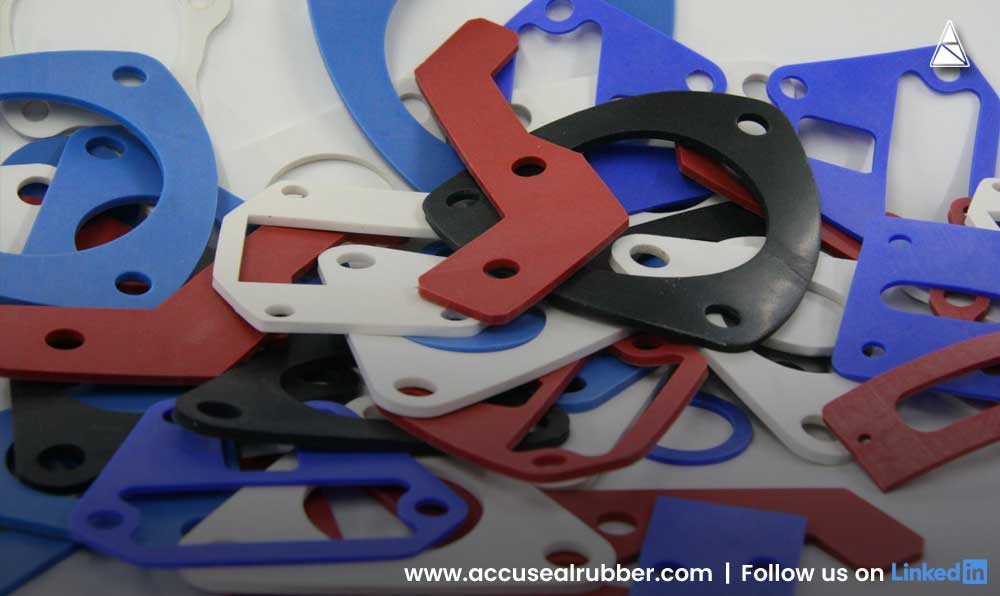In industries where precision and reliability are paramount, the difference between success and failure often comes down to the quality of a single component: the rubber gasket. From automotive and aerospace to chemical processing and water systems, rubber gaskets are indispensable. But how can you ensure that the gaskets you use or manufacture meet the highest standards? The answer lies in rigorous testing and adherence to industry best practices. This guide delves into the essential testing standards that guarantee high-quality rubber gaskets.
Importance of High-Quality Rubber Gaskets
Rubber gaskets play a crucial role in sealing joints and preventing leaks. They endure extreme conditions, such as high pressure, temperature fluctuations, and chemical exposure. A faulty gasket can lead to system failures, costly repairs, or even safety hazards. For this reason, rubber gaskets manufacturers in the USA follow stringent testing protocols to ensure product integrity.
Key Standards Governing Rubber Gasket Quality
Several national and international standards define the quality benchmarks for rubber gaskets. Some of the most critical ones include:
1. ASTM Standards
The American Society for Testing and Materials (ASTM) has developed a range of standards specific to rubber products. Notable ones for gaskets include:
- ASTM D2000: Establishes classification systems for rubber materials based on their properties.
- ASTM F104: Standard classification for non-metallic gasket materials.
- ASTM D395: Covers compression set testing, critical for gaskets’ long-term sealing performance.
2. ISO Standards
The International Organization for Standardization (ISO) provides global standards for rubber gaskets, including:
- ISO 9001: Focuses on quality management systems, ensuring consistency in manufacturing.
- ISO 2230: Details guidelines for the storage of rubber products to maintain quality.
- ISO 3601-1: Specifies dimensions and tolerances for O-rings used in gaskets.
3. FDA and NSF Certifications
For gaskets used in food processing or potable water systems, FDA (Food and Drug Administration) and NSF (National Sanitation Foundation) certifications are essential to confirm that materials are safe for contact with food and water.
Essential Tests for High-Quality Rubber Gaskets
To meet these standards, manufacturers perform various tests that assess the mechanical, thermal, and chemical properties of rubber gaskets. Here’s a closer look at the most critical tests:
1. Compression Set Testing
This test evaluates a gasket’s ability to retain its shape after being compressed. A low compression set indicates that the gasket will maintain a tight seal over time, even under constant pressure.
2. Hardness Testing (Shore A)
Measuring the hardness of rubber is crucial because it impacts the gasket’s flexibility and sealing performance. The Shore A scale is commonly used for elastomers, including rubber gaskets.
3. Tensile Strength and Elongation
Tensile testing determines how much force a gasket can withstand before breaking. Elongation tests measure how much the material can stretch, ensuring it can handle flexing without failure.
4. Thermal Aging
Gaskets are often exposed to high temperatures, which can cause material degradation. Thermal aging tests simulate these conditions to evaluate long-term performance.
5. Chemical Resistance
Gaskets used in chemical processing must resist degradation from exposure to various substances. Chemical resistance tests involve immersing the gasket in different chemicals to assess changes in properties.
6. Leakage and Pressure Testing
Sealing effectiveness is critical for gaskets. Leakage tests under different pressure conditions ensure that the gasket can maintain a seal without failure.
Factors Influencing Rubber Gasket Quality
Several factors influence the performance and longevity of rubber gaskets, including:
1. Material Selection
Choosing the right rubber material is essential. Common materials include:
- EPDM: Excellent resistance to heat, water, and chemicals.
- Nitrile (Buna-N): Known for oil and fuel resistance.
- Silicone: Offers high-temperature stability.
- Viton (FKM): Exceptional chemical and temperature resistance.
2. Manufacturing Techniques
Advanced manufacturing processes, such as injection molding and compression molding, contribute to consistent product quality.
3. Storage and Handling
Improper storage can degrade rubber properties. Gaskets should be stored in a cool, dry place, away from direct sunlight and ozone-generating equipment.
Emerging Trends in Gasket Testing
The rubber gasket industry continues to evolve, with innovations enhancing both performance and testing methods. Some noteworthy trends include:
1. Automated Testing Equipment
Automation increases accuracy and repeatability in testing processes, reducing human error and ensuring consistent results.
2. Sustainability in Materials
Manufacturers are increasingly using eco-friendly materials and adopting sustainable practices to reduce environmental impact.
3. Smart Gaskets
Advancements in materials science are paving the way for “smart” gaskets that can monitor pressure and temperature, providing real-time feedback on system conditions.
Why Testing Standards Matter for Rubber Gasket Manufacturers in the USA
For rubber gaskets manufacturers in the USA, adhering to testing standards is not just about compliance; it’s about reputation and reliability. Customers demand products that perform flawlessly under demanding conditions, and rigorous testing ensures that gaskets meet or exceed expectations.
Trust Accuseal Rubber Inc. for Quality and Reliability
At Accuseal Rubber Inc., we pride ourselves on delivering top-quality rubber gaskets that meet stringent industry standards. Our state-of-the-art testing facilities and commitment to excellence ensure that every gasket we produce performs flawlessly in the field. Whether you need custom solutions or high-volume production, you can trust us for all your gasket needs.
For more information on our products and services, visit our website or contact our team today. Let us help you achieve superior sealing performance with high-quality rubber gaskets.
By understanding and adhering to these testing standards, both manufacturers and end-users can ensure the reliability, safety, and longevity of rubber gaskets. Quality matters—choose wisely!

 Nick Parker
Nick Parker